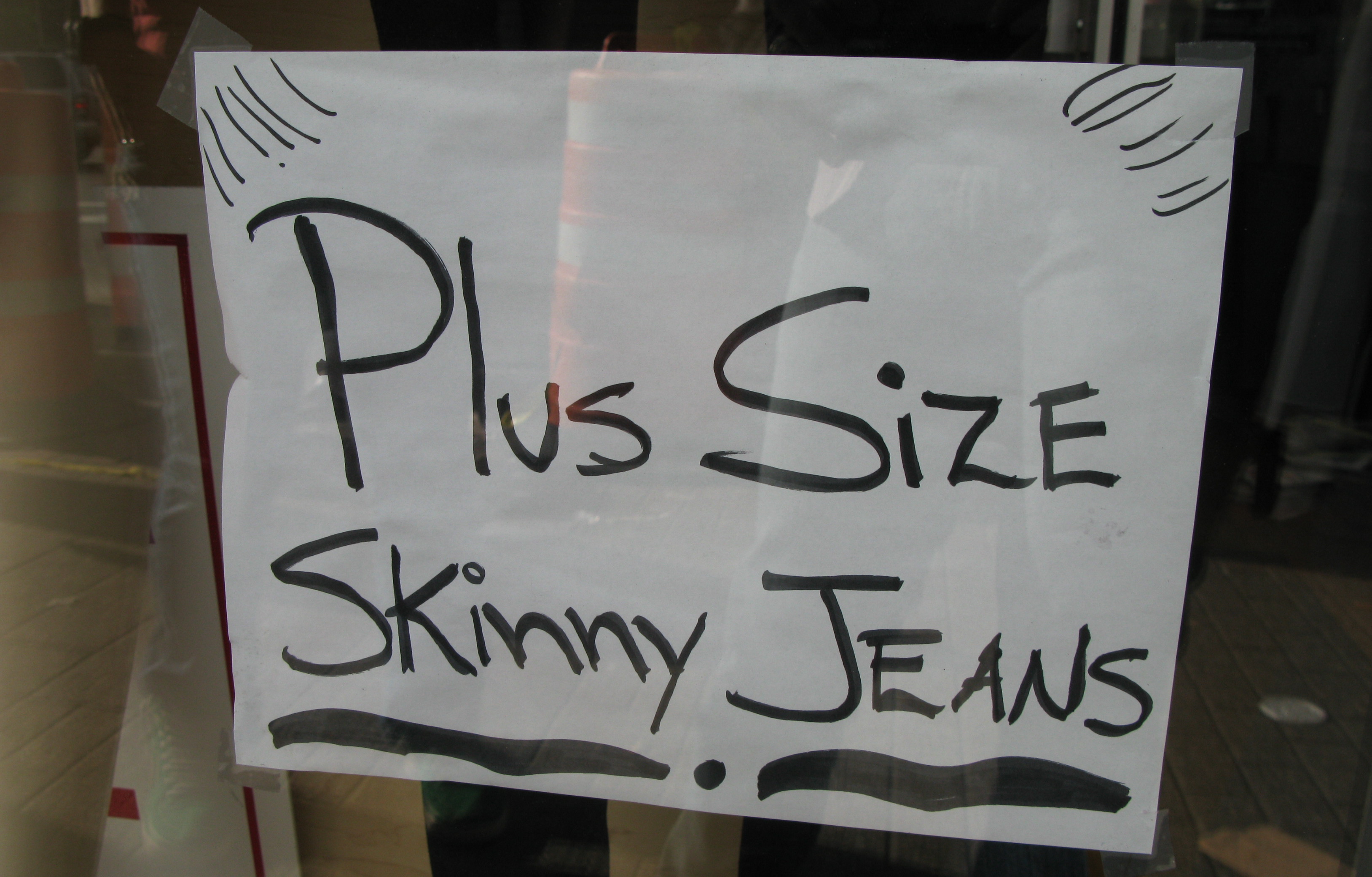Full Figure Fashion Week has been held in New York City since 2009. Nevertheless, it has had minimal bearing on American society despite an average dress size of 14. FFF Week seeks to revamp the plus size sections of department stores and malls to provide plus size (a term not defined by size in the OED as greater than a size 8, or 12-24 and also referred to as full figured, thick, or curvy) women with clothing that is both attractive and appropriate.
American media and society’s disregard for FFF Week reflects an overarching attitude towards the human body as a taboo to cover up and hide. When acknowledged, body size is the site of self-deprecating jokes and snarky tabloids, reflecting both a personal and a systematic contempt for the female body. FFF Week, through its obscurity, makes obvious the design world’s ignorance of varied bodies and stands in contrast to popular culture’s attempt to address plus sizes, these examples themselves problematic.
The call for body positivity and acceptance needs to include nuance and complicate its message away from body acceptance through external validation or forced humor exhibited by Lena Dunham and Melissa McCarthy. Health issues that stem from a high BMI are too serious to glorify for the purpose of inclusivity and acceptance. Furthermore, body size should not be conflated with assumptions about capabilities and intelligence in hiring processes or medical situations. Bodies need to be understood as a spectrum of sizes, shapes and colors, instead of being slotted into different shape categories (triangle, rectangle, hourglass, pear) that are imperfect and restrictive. Most importantly, body acceptance is often packaged for the male gaze, problematizing sexual and emotional health.
According to a study titled “My ‘Fat Girl Complex,” women who intrinsically value their bodies both personally and societally do not associate their sexual health with their body size. However, those who do seek external validation “struggled with acceptance of their sexuality and bodies and spoke of ways in which their body size and appearance hindered them from having the sexually healthy lives that they wanted.” A Glamour survey citing OB/GYN Hilda Hutcherson, M.D. whose patients “complain that it was difficult to relax and initiate or enjoy sex for fear their bodies weren’t ‘good’ enough,” suggests socialization of beautiful skinny bodies or objectified curvy bodies occurs across genders and skews how we value ourselves. The tendency extends to the workplace, where 76 percent of women’s feedback involved personality criticism inclusive of physicality, compared to 2 percent of men’s.
Today in the United States, the average woman weighs 166 pounds and is 5’3”. Recently, social media has witnessed a deluge of explicit (plus size) body-consciousness, in the form of television shows, songs and personalities. Acknowledgement of full figured bodies is still a niche ‘issue’ commonly swept under the rug. Prominent fashion designers such as Calvin Klein and Michael Kors produce plus size lines but do not advertise widely, while Saks Fifth Avenue recently discontinued its in-store plus size line. Bryant, the go-to for plus/full figure/curvy size women, can primarily be accessed at strip malls. The tendency to ignore the >12 sizes is clothed under the euphemism of “brand equity” — the idea that brands sell lifestyles of thin glamorous luxury that cannot be marked by ‘fat bodies.’
Recently, social media has witnessed a deluge of explicit (plus size) body-consciousness, in the form of television shows, songs and personalities (Kim Kardashian, Nicki Minaj, Lena Dunham). At first glance, positive feedback and attention to curvy bodies from women with curvy bodies provides a more reflective and inclusive example of the American woman. The Mindy Project normalizes Mindy Kaling’s body by making it an everyday issue, not a novelty, and thus succeeds in recognizing women’s daily struggle with their bodies — on which adult women spend 6.4 hours a week. Meghan Trainor’s video All About that Bass and Full Figure Fashion Week attempt to normalize plus sizes by establishing a group identity along a plus-size/not plus-size dichotomy. The skinny-fat rhetoric is perpetuated when 0-12 sizes are referred to as ‘skinny bitches’ or ‘straight’ sizes. Such songs and music videos are often sexualized for male appreciation. Meghan Trainor’s main point in that she “ain’t no size two” but “boys like a little more booty to hold at night.” Big butts and defined hips are not really a novelty, though the Kardashian branding, Nicki Minaj’s supposed implants and Dita Von Teese’s intimates line are re-popularizing them. As one blogger put it, “Jennifer Lopez kicked off the popularization and acceptance of big asses in the mainstream — a trait that has been present and celebrated in black and Latino communities in America since basically forever.”
For women who face criticism about their bodies at the work place, through social media and in romantic situations, it is difficult, if not impossible, to dissociate body size from personal evaluation. The issue is not unique to plus-size women, although they are still in need of explicit welcome into the ‘mainstream.’ It is thus important to acknowledge body size as a spectrum and evade the traditional ‘skinny’ and ‘non-skinny’ or ‘plus size’ and ‘non-plus size’ binary framework. Accurately depicting America’s body spectrum is the only solution, and current trends seem to be leading in a hopeful direction.
